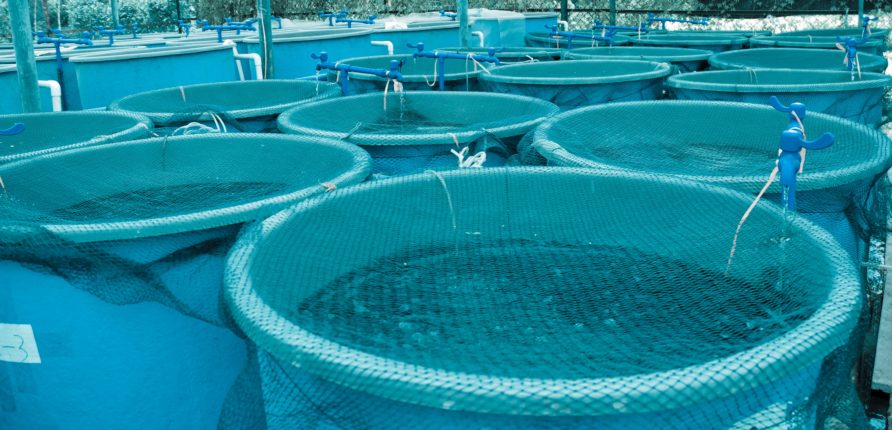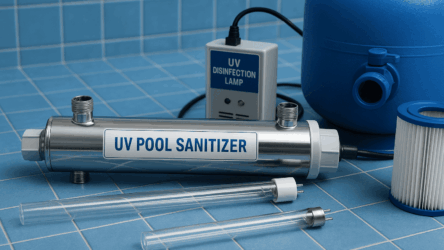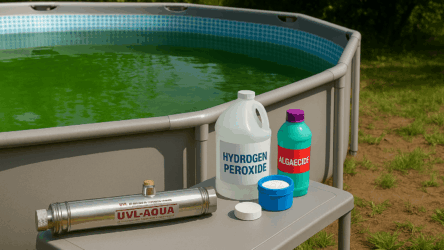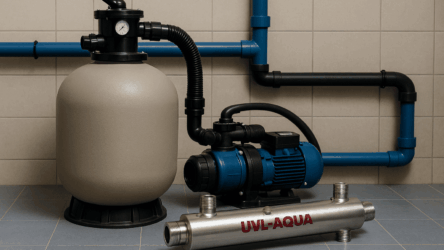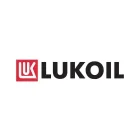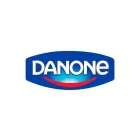Raising fish artificially, whether at home or on an industrial scale, requires a well-maintained closed-loop water supply (CLWS). One of the most critical aspects of aquaculture is preventing fish diseases through effective water treatment. This article compares the two most widely used disinfection methods: ultraviolet (UV) and ozone treatment.
Why water disinfection is essential in fish farming
Ensuring water is disinfected to the required level is vital for the success of any aquaculture operation. Water serves as a medium for various harmful microorganisms and bacteria, so its quality must be continuously monitored. Effective disinfection offers several benefits:
- Eliminates a wide range of harmful microorganisms.
- Enhances water clarity and eliminates unpleasant odors.
- Improves fish farm productivity and efficiency.
Today, the two primary methods for water disinfection in fish farms are ultraviolet (UV) irradiation and ozonation.
Ultraviolet disinfection for closed-loop water systems
A UV disinfection system treats water after it has passed through all prior filtration stages. The germicidal effect is achieved using mercury (or amalgam) UV lamps that emit radiation at a wavelength of 254 nm. This process destroys the DNA and RNA of microorganisms, preventing their reproduction.
To achieve effective UV disinfection in aquaculture, several factors must be considered:
- Water clarity: UV efficiency decreases in turbid water since solid particles block radiation, requiring higher UV doses and increasing costs.
- Maintenance: Regular cleaning and servicing of UV lamps are essential for sustained performance.
- Flow design: There are two main UV system types:
- Submersible UV modules: Installed in tanks, reservoirs, and pools, requiring continuous water circulation near the lamp for effective treatment.
- Flow-through UV units: These feature a UV lamp housed in a protective casing, disinfecting water as it passes through an enclosed chamber, ensuring complete sterilization.
Ozone treatment for aquaculture
Unlike UV, ozone is a gas with powerful oxidizing properties, capable of breaking down organic matter and eliminating harmful microorganisms in aquaculture systems. Ozone treatment effectively purifies water even at high contamination levels, allowing for increased fish stocking density while maintaining high productivity.
How ozone works:
- Oxygen is supplied through an oxygen concentrator or liquid oxygen system.
- Ozone reacts with water, triggering oxidation processes that eliminate contaminants.
- Unused ozone must be removed to prevent harm to aquatic life.
Challenges of ozone treatment:
- Determining the optimal ozone dosage is complex. Excess ozone can harm fish and personnel.
- Factors such as water volume, organic load, chemistry, ozone delivery method, and fish density must be carefully managed.
Comparing ultraviolet and ozone disinfection methods
Advantages of ultraviolet disinfection:
- Chemical-free and safe method for water purification.
- Easy to install and operate.
- Eliminates up to 99% of microorganisms when used correctly.
- Does not alter the chemical composition of water.
- Low maintenance costs.
Disadvantages:
- Ineffective if UV lamp power is insufficient.
- Requires high-quality pre-filtration for optimal performance.
- Needs constant monitoring and maintenance.
Advantages of ozone :
- Enhances water clarity and quality.
- Ozone dosage can be controlled to monitor disinfection efficiency.
- Effectively eliminates nearly all bacteria and viruses.
- No need for storage or transportation; ozone is generated on-site.
- Breaks down into oxygen within 20-30 minutes, leaving no residues.
- Fast-acting disinfection.
Disadvantages :
- Potential hazards: Incorrect dosing can be harmful to fish and humans.
- Requires specialized ozone-resistant materials (e.g., stainless steel, polyethylene).
- Higher operational costs compared to UV disinfection.
Combining ozone and ultraviolet for optimal results
Both UV and ozone have distinct advantages, and combining them creates a highly effective disinfection system. Here’s how it works:
- Ozone is used first to improve water clarity and conduct initial disinfection.
- UV follows as the primary disinfection step, eliminating remaining microorganisms and neutralizing residual ozone.
This combination enhances the efficiency of both technologies, ensuring superior water quality without the downsides of excessive ozone exposure.
Conclusion
Aquaculture requires meticulous water disinfection to maintain fish health and farm productivity. Investing in the right disinfection system—UV, ozone, or a combination of both—ensures a safer and more efficient operation. By understanding the strengths and limitations of each method, fish farmers can make informed decisions and optimize their water treatment processes.

